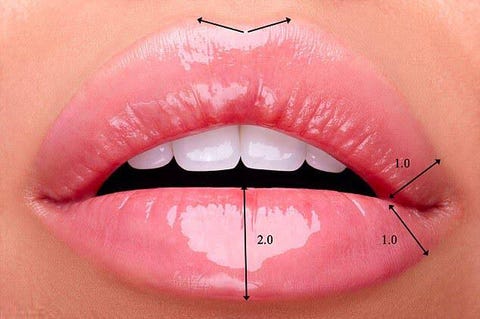
Barely a week goes by without lip augmentation making the headlines. Whether part of the widely-documented Kylie Jenner lip job saga (she denied it, admitted it, had them dissolved, had them redone…), fillers hitting the high street (Superdrug has recently tightened mental health checks) on customers booking cosmetic procedure appointments, following NHS criticism), the banning of advertising of procedures deemed unethical (an ad in Index Magazine was found to breach rules regarding children, responsible advertising, and harm and offence) or lobbying for legislation (the UK aesthetics industry is currently unregulated) – as the rise of lip fillers continues, so does controversy surrounding the topic
How is injectable lip filler used?
“Fillers are typically used to increase the volume and size of the lips. Collagen or hyaluronic acid-based filler are typical,” Dr Esho explains, who uses Juvederm, a popular injectable filler with a base of hyaluronic acid. “Collagen works by plumping, while hyaluronic acid works by both plumping but also holding water within the lip for a more natural effect”
How long does lip filler typically last?
“It is dependent on factors such as the age of the patient and the brand used,” he says. “Top-ups are typically required every four-to-six months to keep the desired result”
Is the industry regulated?
Surprisingly, no, and Dr Esho – who has treated hundreds of botched cases – says that Britain’s unregulated aesthetics industry is a cause for serious concern. “Lobbying, public awareness and practitioners being ethical is a key part in how we can put a stop to this, but the government has to input a model that will help control things,” he warns
While Botox is a prescription-only medicine, meaning only medically trained professionals can administer it, dermal fillers are not. Pulse reports that the government intends to make fillers prescription-only from 2020, but until then–given the lack of regulation, the industry is a cause of serious concern
So how do you find a good and safe practitioner?
“Research is key, and you must ensure that you find someone who’s appropriately medically qualified,” Dr Esho advises. “Check whether they are a registered medical professional (i.e. a doctor, nurse, dentist).” We recommend using the JCCP’s (Joint Council for Cosmetic Practitioners) ‘Practitioner Register’, and also searching the register of accredited practitioners on the BAAPS (British Association of Aesthetic Plastic Surgeons) website
“Other things to ask a practitioner include: how long they have practiced, if they have insurance cover, whether there is an aftercare plan in place, and what they would do if things go wrong”
What can you expect to happen during a procedure?
Initially the lips are numbed via topical anaesthetic or via a dental block and the area is cleansed. In Dr Esho’s case, he then approaches treating a patient using his ‘nano droplet technique’. “This is where small amounts of filler are administered to line and define based upon ‘The Esho Ratio’. This is a 1:1 ratio between the top line and outer thirds of the bottom lip, with the central segment of the lower lip 1:2 ratio versus the top lip – so it’s thicker in the middle with an accentuated cupid’s bow. The perfect example of this can be seen on stars including Angelina Jolie, Michelle Keegan and Emily Ratajowski.” He adds that with lip augmentation, the aim every time is to maintain a natural appearance, “however over time the perception of ‘natural’ has changed and evolved”

What usually happens immediately afterwards?
Immediately after a procedure you can expect injection-site redness, swelling, pain and tenderness, which may last around 24 hours. If this doesn’t settle down, you should contact your practitioner
What are the risks and side-effects?
“Lip augmentation is a medical procedure and all medical procedures carry risk associated with needle use, including infection, bruising, bleeding,” he says. “In addition, there is the risk associated with the filler, including allergy, necrosis and blindness (thanks to the filler blocking a blood vessel).” You should always be asked to provide contact details in case of emergency
Source: Bazaar




Leave A Comment